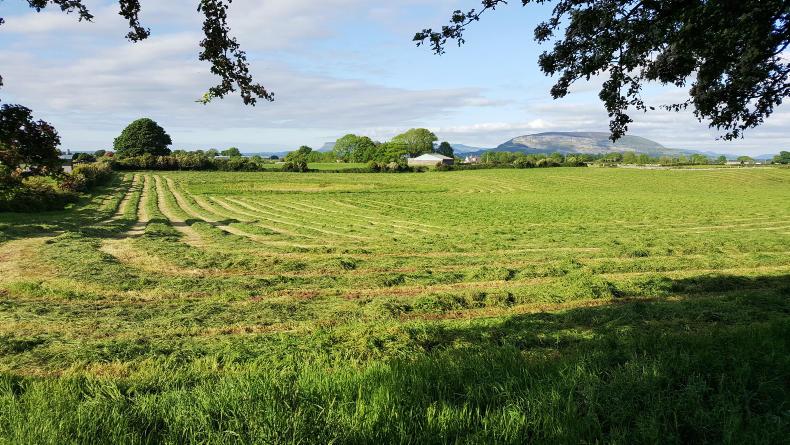Earlier this year, I wrote about managing the farm finances, getting to grips with variable and fixed costs and getting a better overall understanding your accounts.
There have been numerous articles written recently drawing my attention to the level of debt on Irish farms.
The Agriculture Cashflow Support Loan scheme backed by the Strategic Banking Corporation of Ireland (SBCI) and the Department of Agriculture, more commonly known as “the cheap money”, was fully utilised within only a matter of weeks – €150m distributed to farmers to be repaid at interest rates of 2.95%.The Association of Farm Contractors of Ireland has estimated that contractors are owed €12m in outstanding debt. This debt which contractors are carrying in effect makes them bankers charging 0% interest.Low cattle, beef and milk prices in 2016 along with bad weather affecting the tillage sector, which needs the support of a tillage crisis fund, leaves one wondering what level of debt the country’s agricultural merchant suppliers are carrying for the farming sector.The Teagasc national farm survey shows a large variance in debt across farming sectors but shows direct payments accounting for between 100% and 120% of income in the west and border regions.It is probably a good time to sit down and look again at the farm budget
At the halfway point in the year, it is probably a good time to sit down and look again at the farm budget. Take account of sales and expenses to date and adjust the budget up or down as the year progresses.
Costs
Costs such as fertiliser, contractors and silage wrap may be known or close to known and other costs can be adjusted up or down based on current stock levels and performance for the year to date. Ensure that costs are fully provided for, considering the stage at which you wish to sell, whether that is selling live or bringing animals all the way to finish.
Farm payments
I have always felt that there was a flaw in the way farm payments are distributed, with virtually all payments received by farmers in the last three months of the year. This, along with delayed payments we have seen with GLAS, can put serious cashflow pressure on farmers in the first half of the year.
The fact that these payments were not index-linked to inflation and are based on historical production values are further flaws in the system.
Cashflow
Once the above figures are put together, each farm should have a very good idea of the direction of cashflow for the remainder of the year. Hopefully, this is a positive figure and there is enough cash inflow to meet future living expenses and debt repayments.
Read more
Money mentor
Earlier this year, I wrote about managing the farm finances, getting to grips with variable and fixed costs and getting a better overall understanding your accounts.
There have been numerous articles written recently drawing my attention to the level of debt on Irish farms.
The Agriculture Cashflow Support Loan scheme backed by the Strategic Banking Corporation of Ireland (SBCI) and the Department of Agriculture, more commonly known as “the cheap money”, was fully utilised within only a matter of weeks – €150m distributed to farmers to be repaid at interest rates of 2.95%.The Association of Farm Contractors of Ireland has estimated that contractors are owed €12m in outstanding debt. This debt which contractors are carrying in effect makes them bankers charging 0% interest.Low cattle, beef and milk prices in 2016 along with bad weather affecting the tillage sector, which needs the support of a tillage crisis fund, leaves one wondering what level of debt the country’s agricultural merchant suppliers are carrying for the farming sector.The Teagasc national farm survey shows a large variance in debt across farming sectors but shows direct payments accounting for between 100% and 120% of income in the west and border regions.It is probably a good time to sit down and look again at the farm budget
At the halfway point in the year, it is probably a good time to sit down and look again at the farm budget. Take account of sales and expenses to date and adjust the budget up or down as the year progresses.
Costs
Costs such as fertiliser, contractors and silage wrap may be known or close to known and other costs can be adjusted up or down based on current stock levels and performance for the year to date. Ensure that costs are fully provided for, considering the stage at which you wish to sell, whether that is selling live or bringing animals all the way to finish.
Farm payments
I have always felt that there was a flaw in the way farm payments are distributed, with virtually all payments received by farmers in the last three months of the year. This, along with delayed payments we have seen with GLAS, can put serious cashflow pressure on farmers in the first half of the year.
The fact that these payments were not index-linked to inflation and are based on historical production values are further flaws in the system.
Cashflow
Once the above figures are put together, each farm should have a very good idea of the direction of cashflow for the remainder of the year. Hopefully, this is a positive figure and there is enough cash inflow to meet future living expenses and debt repayments.
Read more
Money mentor






 This is a subscriber-only article
This is a subscriber-only article










SHARING OPTIONS: